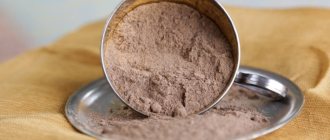You don't need to drink coffee to wake up in the morning
Your body naturally produces the hormone cortisol in the morning, which will help you feel alert and fresh. This is due to the characteristics of the human body, the so-called circadian daily rhythms. So if you have a habit of drinking coffee in the morning to wake up, then this makes no sense at all. It is much better to wait until your cortisol levels drop, which will be after 9–10 a.m., and then drink a cup of coffee.
Safe dose of caffeine is 400 mg per day
Each person reacts to caffeine differently depending on their metabolism. It has long been established that excessive coffee consumption can adversely affect health, and a safe dose of caffeine for each person is individual and depends on both physiology and the method of consumption of the substance.
According to research from 2003, the safe dose of caffeine for a healthy adult is 400 mg per day (about 500 mg of coffee). A large dose may cause heart problems or negative mood changes.
However, you should not forget that pregnant women need to reduce this norm by almost half, since an excess of caffeine in the body increases the likelihood of miscarriage. In addition, smokers should also drink less coffee than a non-smoker because their body cleanses itself more slowly.
Coffee does not cause dehydration
Great news! Caffeine has long been blamed for its diuretic properties, but this is actually not true. As long as you don't drink coffee in large quantities (more than 500-600 mg per day, or two cups), there won't be any negative effects.
Studies have shown that diuresis does not change significantly when a person drinks caffeinated drinks. So as long as you enjoy coffee in moderation, there is little cause for concern.
2. It is drunk in dozens of different countries, morning and evening, at lunch and at breakfast. And how many of its varieties have been bred at present is impossible to count!
3. The usual drink from roasted grains crushed into powder began to be prepared only in the 13th century. At the same time, they began to add cinnamon, vanilla and milk to coffee.
4. Don't forget that you shouldn't drink too much coffee - it can be harmful to your health.
5. Coffee was discovered around 850 AD, but its real popularity came only a few centuries later.
6. The most common type of coffee is Arabica (69% of world production), followed closely by Robusta (29%), and the remaining varieties account for only 2% of world coffee production.
7. In Italy, coffee was first discovered in 1615, and in 1720 in the city of Venice, on St. Mark’s Square, the world-famous Florian cafe opened, which was visited by Goethe, Casanova and Rubinstein, and the Guardi cafe, which was visited by Liszt and Byron.
8. In Uganda, green coffee beans are usually mixed with spices and sweet grass, dried and hung in bags around the house as decoration and a talisman.
9. Coffee does not contribute to dehydration. Caffeine has long been blamed for its diuretic properties, but this is actually not true. As long as you don't drink coffee in large quantities (more than 500 to 600 milligrams per day, or two cups), there won't be any negative effects.
10. The first coffee shop in Paris opened in 1689 and was called Procope. Its owner was lemonade merchant Francois Procope. It was located opposite the theater, and its main visitors were representatives of bohemia - artists and painters.
11. The main coffee producer on Earth is Brazil. It is interesting that workers of Brazilian plantations collect not only ripe berries, but all fruits without exception. Sometimes they use a pneumatic device to shake the branches of the coffee trees so that the berries fall to the ground.
12. Italians drink coffee with sugar, Mexicans - with cinnamon, Germans and Swiss - with hot chocolate, Belgians - with chocolate. Ethiopians add salt to their coffee, and Moroccans add pepper.
13. In the Middle East, cardamom or other spices are often added to coffee. Austrians drink coffee with whipped cream. Egyptians prefer “pure” strong coffee, adding sugar, milk, cream, and cardamom if desired.
14. Coffee contains important nutrients needed for survival. One cup of coffee contains 11% of the daily recommended intake of riboflavin (vitamin B2), 6% pantothenic acid (vitamin B5), 3% manganese and potassium, and 2% niacin and magnesium.
15. In Russia, coffee has long been considered more of a medicine than a tasty drink - it was used to treat migraines and a number of other diseases.
16. The height of the coffee tree is a little more than 9 meters. But since it is more convenient to collect fruits from lower trees, now the height of coffee trees rarely exceeds 3 meters.
17. The coffee genus consists of approximately 90 plant species, but only two of them are used on an industrial scale.
18. In those countries where coffee grows, it is still collected by hand. An experienced picker can harvest up to 7 baskets of beans per day, each weighing up to 100 kilograms. Payment for this work ranges from $2 to $10 per basket. After the beans are dried and roasted, the price of the basket increases to $110.
19. Instant coffee was invented in 1906 by a Belgian named George Washington.
20. Coffee lovers visit the dentist much less often. The elements contained in this drink prevent bacteria from settling on tooth enamel.
21. Espresso does not have as much caffeine as drip coffee. Espresso is prepared quickly by passing water under high pressure through the ground beans. Since this reduces the contact between water and coffee, there will be less caffeine in the Espresso cup.
22. If you drink 4 cups of coffee a day every day, this can minimize the risk of gallstones and cirrhosis of the liver. Moreover, coffee drinkers have a 60% reduced chance of developing Parkinson's or Alzheimer's disease.
23. In 1675, the British monarch Charles II closed all the "coffee houses" in England because he believed that citizens opposed to him were gathering there. The king's example was repeatedly followed by other world monarchs.
24. Caffeine is a substance banned by the International Olympic Committee. If, during testing, more than 12 micrograms of caffeine per liter is detected in an athlete’s urine, he will be removed from the competition.
25. Studies have shown that diuresis does not change significantly when a person drinks caffeinated drinks. So as long as you enjoy coffee in moderation, there is little cause for concern.
26. Coffee was discovered thanks to Ethiopian goats. According to legend, Ethiopian shepherds were the first to drink coffee after seeing how goats behaved and chewed the berries of this plant with pleasure.
27. Caffeine begins to act very quickly. It only takes about 10 minutes from the first sip until the caffeine begins to take effect.
28. The first coffee shop in Vienna was opened by the Pole Kolzycki. He was a real coffee fan and managed to save more than one bag of coffee beans when the Turks leaving the city set it on fire. It was thanks to the Turks that the Austrians already in 1683 learned how to truly cheer up.
29. Caffeine enhances the effect of aspirin and paracetamol. After a cup of coffee, acidity increases, and the stomach accepts and dissolves painkillers more readily.
30. Coffee consumption is greatest in Finland, where adults consume an average of five cups of coffee per day.
31. Caffeine improves performance in sports. Caffeine increases your adrenaline levels and releases fatty acids from fat tissue, leading to better results in those who drink coffee before exercise.
32. A coffee tree grows and bears fruit for about 60-70 years, and up to one and a half thousand berries can be collected from one tree per year.
33. 70% of coffee lovers drink Arabica, which has a pleasant, mild taste, and 30% drink Robusta, which has a bitter taste and contains half as much caffeine.
34. “Robusta” is a lower class variety, but it is more resistant to drought, disease, and you can harvest twice as much from it.
35. Arabica contains about 1% caffeine, Robusta – 2%. Manufacturers of instant coffee mainly mix Robusta and Arabica.
36. Coffee is good for your liver. People who drink four cups of coffee a day are 80% less likely to develop cirrhosis of the liver.
37. Coffee is a berry bean that is red, yellow or green in color.
38. A cup of black coffee without sugar has 0 calories.
39. Green (unroasted) beans can last up to a year in a cool, dry place without losing much of their flavor. After coffee beans are roasted, their properties begin to disappear after about two days.
40. Caffeine is actually crystals. The entire effect of coffee is caused by tiny 0.0016-inch caffeine crystals entering your body. So small, but that's how they work.
41. The most expensive coffee in the world is made from elephant dung, and it is called Black Ivory. It costs $50 for one cup. To get 1 kilogram of this type of coffee, you need to feed 33 kilograms of fresh coffee berries to an elephant. After they are digested, the wives of the elephant mahouts collect the dung, knead it and extract coffee from it.
42. Previously, Turkish grooms made a promise during the betrothal ceremony that their wives would certainly be provided with coffee, and failure to fulfill the vow could cause divorce.
43. One cup of coffee contains 300 antioxidants that will stay in the body for a month.
44. Coffee became an everyday drink in Russia only thanks to the efforts of Peter the Great, who forced his entourage to drink “bittersweet.”
45. Coffee will help you live longer and healthier. Coffee contains many antioxidants (it is the largest source of antioxidants in the average Westerner's diet!). This helps in the fight against so-called free radicals, which cause many serious diseases. As a result, coffee drinkers are less likely to develop diseases such as Parkinson's disease, diabetes and heart disease.
46. In Bedouin homes, coffee is usually prepared with ginger or cardamom, which results in a yellow color and a very pleasant taste. At the same time, according to tradition, it is served to the guest with the words “My home is your home.”
47. October 1 is “Coffee Day” in Japan. This country ranks third in the world in terms of coffee consumption per person.
48. Decaffeinated coffee appeared by accident - a ship with coffee beans almost sank during a storm, and its hold filled with water. The owner of the cargo was in despair, but still decided to take the grains to a specialist and make sure that they were unsuitable for sale. To his surprise, the beans were fine, only they had lost almost all of their caffeine during their stay in the water.
49. Coffee ranks second in the world ranking of the most sold goods. In the first position is oil.
50. Coffee is grown in a strictly defined area called the coffee belt of the planet. The coffee belt unites all regions that have the conditions necessary for coffee to grow. Since this plant requires a lot of sunlight and heat, all these areas are located near the equator.
photo from the Internet
Coffee will help you live longer and healthier
Coffee contains many antioxidants (it is the largest source of antioxidants in the average Westerner's diet!). This helps in the fight against so-called free radicals, which cause many serious diseases. As a result, coffee drinkers are less likely to develop diseases such as Parkinson's disease, diabetes and heart disease.
Coffee ritual in different countries
How is coffee served in different countries? Each country has its own recipes for making coffee and the ritual of serving it:
- In Ethiopia, coffee is prepared by the owner of the house and served first to the most respected guest. It is impossible to refuse a cup of coffee, since this is a mortal offense for the owner.
- In Ecuador, a concentrated coffee drink is brewed in advance by adding sugar. The cooled liquid is sent to the refrigerator. Before serving, add boiling water to taste.
- In Vietnam, coffee is brewed from Robusta. Cool and drink cold in small portions.
- In Turkey, coffee is used as a ritual drink. Before the wedding, it is cooked by the bride for the groom's parents. The groom promises his future wife to provide her with coffee beans for life. Breaking a vow can lead to divorce.
- In Greece, a cup of aromatic coffee with foam can become a declaration of love if a girl treats a guy to a drink.
Coffee Ritual: Pixabay
Black Ivory is the most expensive coffee and it's made from excrement.
The most expensive coffee in the world is made from elephant dung and is called Black Ivory. It costs $50 for one cup. To get 1 kilogram of this type of coffee, you need to feed 33 kilograms of fresh coffee berries to an elephant. After they are digested, the wives of the elephant mahouts collect the dung, knead it and extract coffee from it.
Coffee trees
Where do coffee beans grow? Coffee grows on trees in 50 countries around the world. There are more than one billion such trees. Coffee plantations are located in South America, tropical Africa and Asia.
The coffee tree first blooms magnificently with white flowers, then green balls appear on the branches, which gradually turn into red fruits. The soft shell of the fruit contains two green grains with a grassy taste. Only after special drying and roasting do they acquire an unsurpassed aroma.
Authors of the book “The Magic of Coffee. The Complete Encyclopedia" Jordan Michaelman, Zachary Carlsen claim that coffee is a fruit; coffee berries grow on trees. The seed inside the fruit develops just like the pit inside a cherry.
Despite the huge crown, one tree produces only 3 kg of grains per year. After roasting this amount of beans, the net weight of the coffee is 400 g and fits in one bag.
Coffee tree: Needpix
Caffeine helps you accept points of view different from your own
Caffeine can have a special effect on the brain: in particular, it helps you agree with a statement that you previously did not agree with, because it increases the brain's ability to perceive the logic of other people's judgments.
True, the more distracted during a discussion of a particular issue by something unrelated to the subject of the conversation, the less likely it is to convince your opponent, since he will not be able to concentrate on the topic and pay due attention to the arguments presented.











